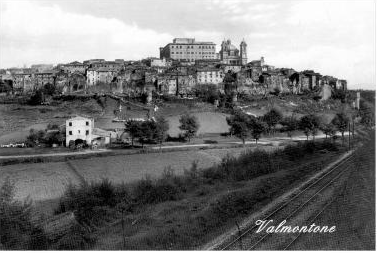
Valmontone is an important town just a few kilometers from Rome. Its proximity to the capital and excellent road and rail links have made it one of the most important cities in the southern part of the Roman province. It stands on a tufaceous hill, 330 m. above sea level. The landscape that surrounds the town is mostly hilly and rich in green, thanks to the nearby river Sacco and numerous water sources. The origins of Valmontone encroach on legend. It seems to have been founded by Glauco, son of Minos, and called Labicum by the name of the battle shield. The name VALMONTONE appears for the first time in a document of 1139, and means "valley surmounted by a mountain", by virtue of the fact that the town stood on a mountain overlooking a valley. In 1208 Innocent III, of the family of the Counts, bought the land of Valmontone and entrusted it to his brother Riccardo, count of Sora. In this flourishing period Valmontone was a destination sought by important figures such as Charles VIII, King of France, and Urban VI. In the first half of the 16th century, due to bad alliances and relationships, Valmontone was sacked by the armies of Pope Paul IV and the troops of Marcantonio Colonna. In 1634 Valmontone was purchased by the Barberini family and, in 1651, by the prince Camillo Pamphilj, nephew of the then pontiff Innocenzo X. In those years Valmontone experienced its maximum artistic and monumental splendor. In 1843 the Pope Gregory XVI, returning from a visit to Anagni, stopped in Valmontone and visited the Palazzo Doria Pamphilj and the Collegiate Church. In the same year is the Bull with which the Pope elevated Valmontone to the rank of "City". Between October 1944 and May 1945 the city was repeatedly bombed and cannonaded by the allied forces that caused the almost total destruction of the inhabited center and the death of numerous civilians. On 9 May 1960 she was then awarded the silver medal for civil merit with the following motivation: "She endured, with fearless pride, numerous aerial bombardments that destroyed most of her buildings and caused the death of 157 of her best children, never bowing before the invader in arms, nor doubting in the best destinies of the Fatherland ".
Even if the number of victims falling under the bombardments is controversial, the historical and human evidence of the deep wounds suffered by the City of Valmontone during the last war conflict remains.





